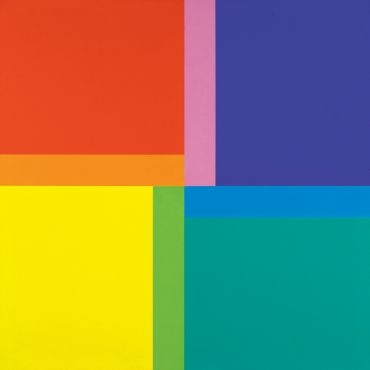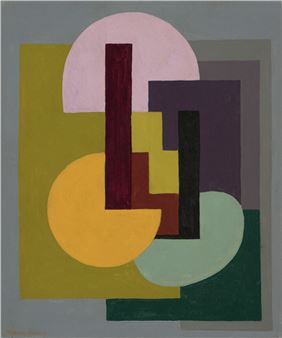Concrete Concerns. Teufel Collection
The term "Concrete Art" was coined by the Dutch artist Theo van Doesburg. He first used it in 1930 in a manifesto that was published in the periodical he edited, "Art Concret." For van Doesburg, Concrete Art ushered in a new era: "We anticipate the time of pure painting, because nothing is more concrete, more real, than a line, a color, a surface." Concrete Art defined a nonrepresentational approach that made the fundamental means of artā€”color, basic geometric forms, rhythmā€”the subject of painting and sculpture, and examined their behavior on the surface as well as in space.
Heinz Teufel (1936 ā€“ 2007) dedicated himself to Concrete Art throughout his life. His passion was initially sparked by a visit to the Pavilion of the City of Ulm, designed by Max Bill, at the State Exhibition in Stuttgart in 1955. He was fascinated by its functional and formal clarity.
The international positions in the Teufel Collection reflect Concrete Artā€™s stylistic richness of form. The core of the collection comprises paintings, sculptures, and works on paper by Josef Albers, Camille Graeser, Antonio Calderara, Bridget Riley, AurĆ©lie Nemours, FranĆ²ois Morellet, Heijo Hangen, and Andreas Brandt. Since 2005 the roughly two hundred works have been housed in the Kunstmuseum Stuttgart. In 2009 the collection permanently entered the holdings in the form of a donation.

Recommended for you
The term "Concrete Art" was coined by the Dutch artist Theo van Doesburg. He first used it in 1930 in a manifesto that was published in the periodical he edited, "Art Concret." For van Doesburg, Concrete Art ushered in a new era: "We anticipate the time of pure painting, because nothing is more concrete, more real, than a line, a color, a surface." Concrete Art defined a nonrepresentational approach that made the fundamental means of artā€”color, basic geometric forms, rhythmā€”the subject of painting and sculpture, and examined their behavior on the surface as well as in space.
Heinz Teufel (1936 ā€“ 2007) dedicated himself to Concrete Art throughout his life. His passion was initially sparked by a visit to the Pavilion of the City of Ulm, designed by Max Bill, at the State Exhibition in Stuttgart in 1955. He was fascinated by its functional and formal clarity.
The international positions in the Teufel Collection reflect Concrete Artā€™s stylistic richness of form. The core of the collection comprises paintings, sculptures, and works on paper by Josef Albers, Camille Graeser, Antonio Calderara, Bridget Riley, AurĆ©lie Nemours, FranĆ²ois Morellet, Heijo Hangen, and Andreas Brandt. Since 2005 the roughly two hundred works have been housed in the Kunstmuseum Stuttgart. In 2009 the collection permanently entered the holdings in the form of a donation.
Contact details


 ARTISTS
ARTISTS












